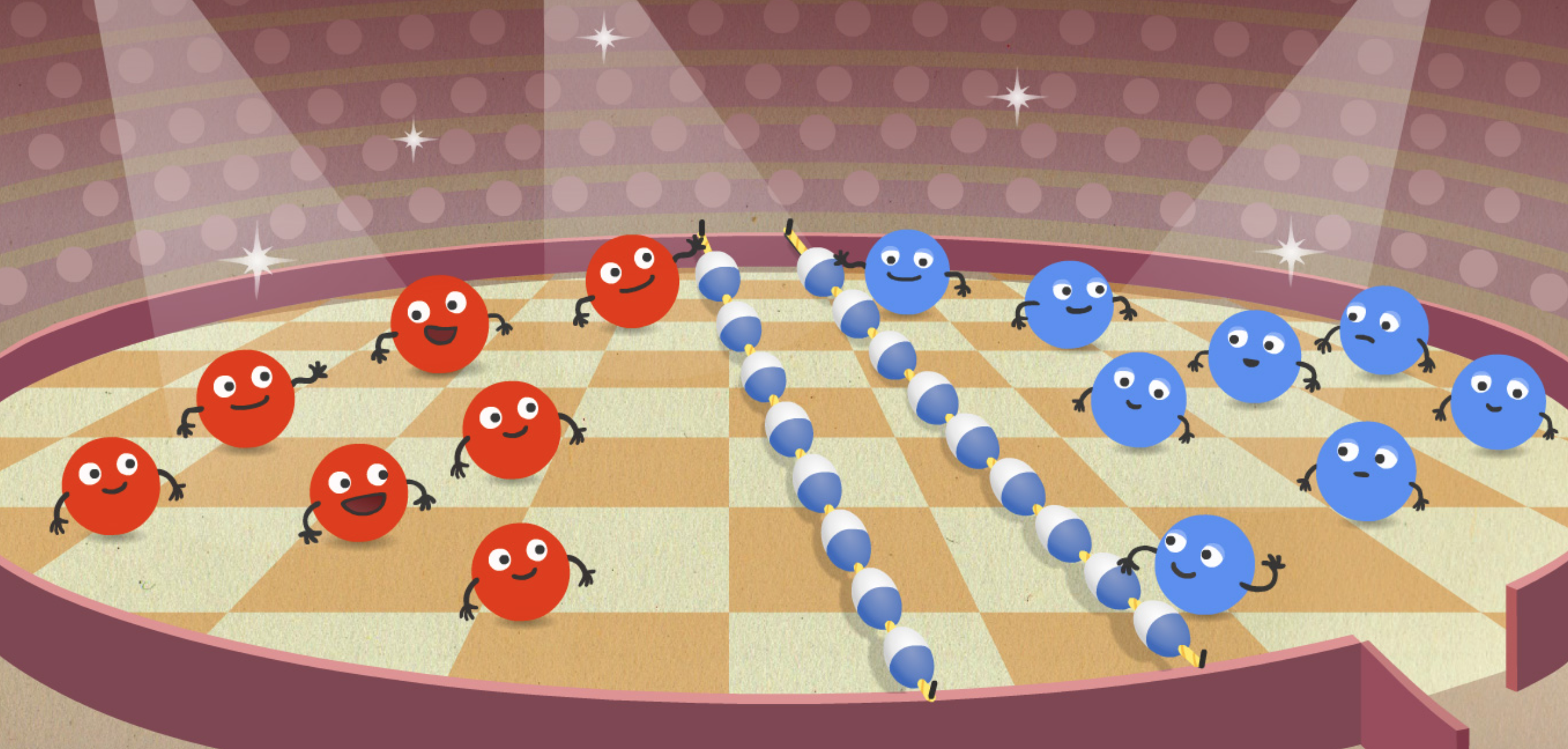The Land of Bump
How an Animated Story Helps Young Students Develop Heat and Temperature Concepts
Over the past two years we have conducted dozens of interviews with groups of children in kindergarten through second grade to find out if new visualization technologies could help young students explain phenomena of temperature and heat scientifically. We discovered that these children readily accept the idea that the world is composed of tiny particles that are always in motion—a concept that is the fundamental building block for the kinetic heat model.
What does this discovery mean for science education? Can these technologies be used practically in early elementary classrooms? To find out, the Sensing Science project worked with six adventurous K-2 teachers who took their students on a journey of inquiry into temperature and heat. We introduced the teachers to these new tools and technologies, discussed the science of molecular heat, and considered different classroom approaches to teaching the subject.
Their students worked with three technologies: an infrared camera, a “thermoscope,” and an online story called “The Land of Bump” in three classroom lessons. The infrared (IR) camera helps children visualize changes in temperature, but it does not present heat as particles in motion. So we focus here on the thermoscope and the Land of Bump, technologies that address heat transfer through particle motion.
Heat and temperature technologies
The Sensing Science project invented a new tool—the thermoscope—to visualize temperature as kinetic motion. The thermoscope uses temperature probes attached to a computer to control the speed of randomly moving particles of a molecular model (see cover). The dots on the screen move faster as temperature increases (by placing the probe in hot water, for example) and slower as the probe touches something cooler. Students experimented with the speed of particles by placing the temperature probes in hot or cold water, and were asked to predict events such as mixing cold and hot water.
Using the thermoscope, students tested different temperatures and carefully observed the screen of moving particles. They noticed that the overall speed of the particles is governed by temperature, but that even at the same temperature, particles move at different speeds. When particles randomly bump into each other, the students noticed how the speed changes—when a fast particle bumps a slow one, the fast particle slows down and the slow one speeds up.
Students also read an online animated story called The Land of Bump (Figure 1) that we co-developed with FableVision. The main characters—round dots called “Cool Blues” and “Red Hots”—like to dance. The Cool Blues like to dance slowly while the Red Hots like to dance fast. While this dimension of choice ran the risk of confusing the students, who sometimes explain the characters’ changes by saying “because they wanted to,” the children were, nonetheless, able to relate the story to the particle motions they had observed with the thermoscope.
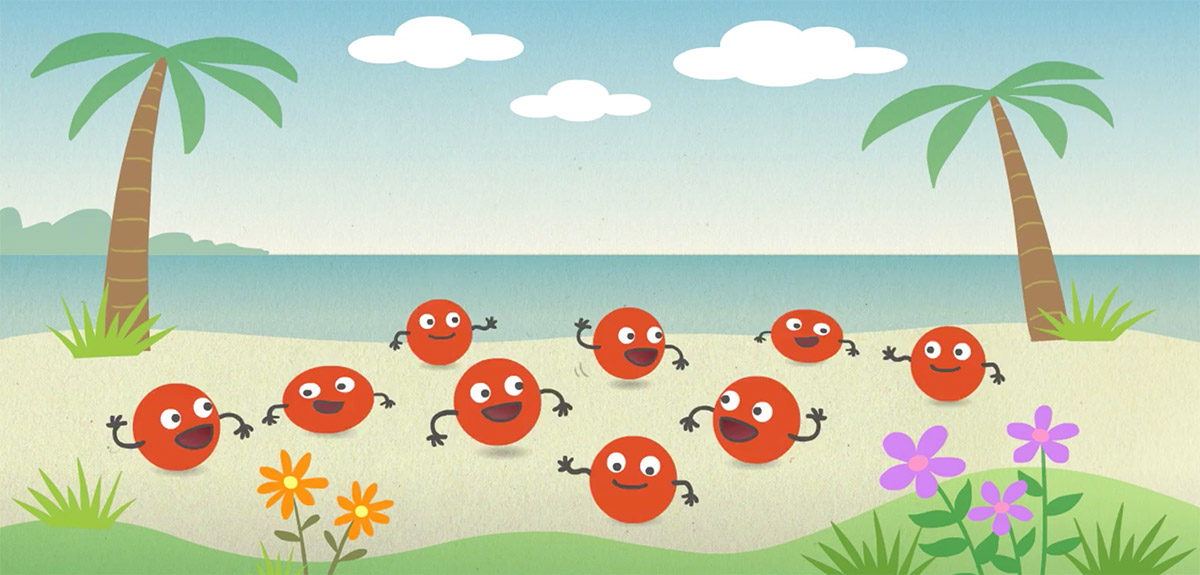
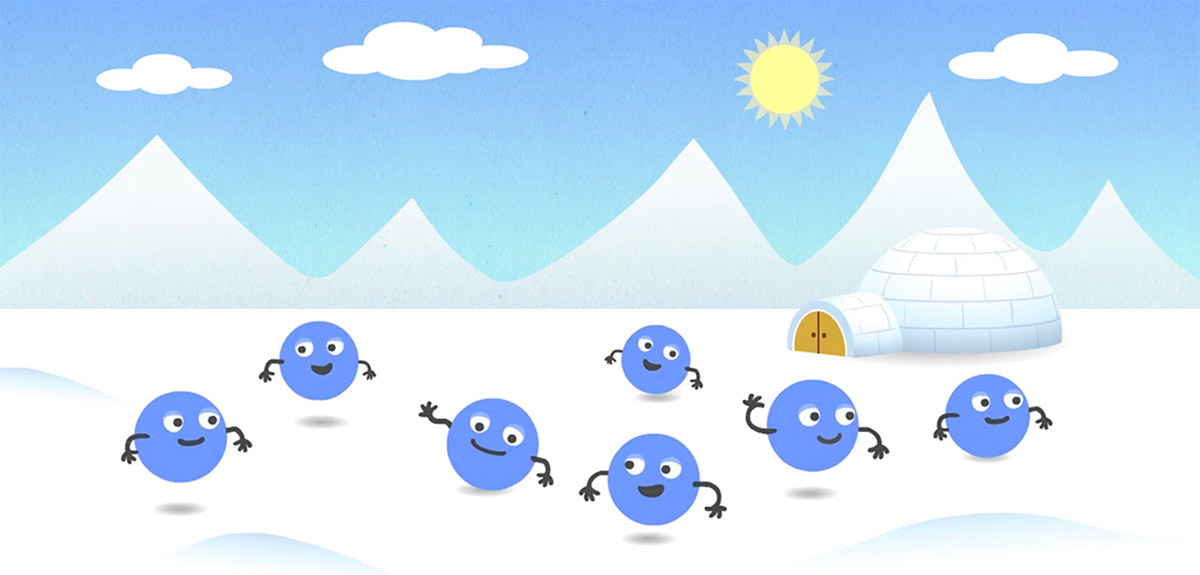
The problem confronted by the story’s characters is how dots in adjacent areas can dance without changing their speed. Students must use their understanding of how fast- and slow-moving dots interact—how bumping transfers heat—to find a creative solution to avoid bumping. We found that their previous use of the thermoscope was critical to their solving the problem.
Young students relating concepts
With a single barrier between them, the Red Hots and Cool Blues eventually all dance at the same speed because the bumping is transferred through the barrier. But when a double insulating barrier separates them, they dance at their original speeds—fast and slow (Figure 2). A good insulator prevents the interaction of hot and cold particles. The barrier that contains the hot particles cannot bump the barrier that contains the cold particles even though both are moved by the particles on their side. How do students explain this solution?
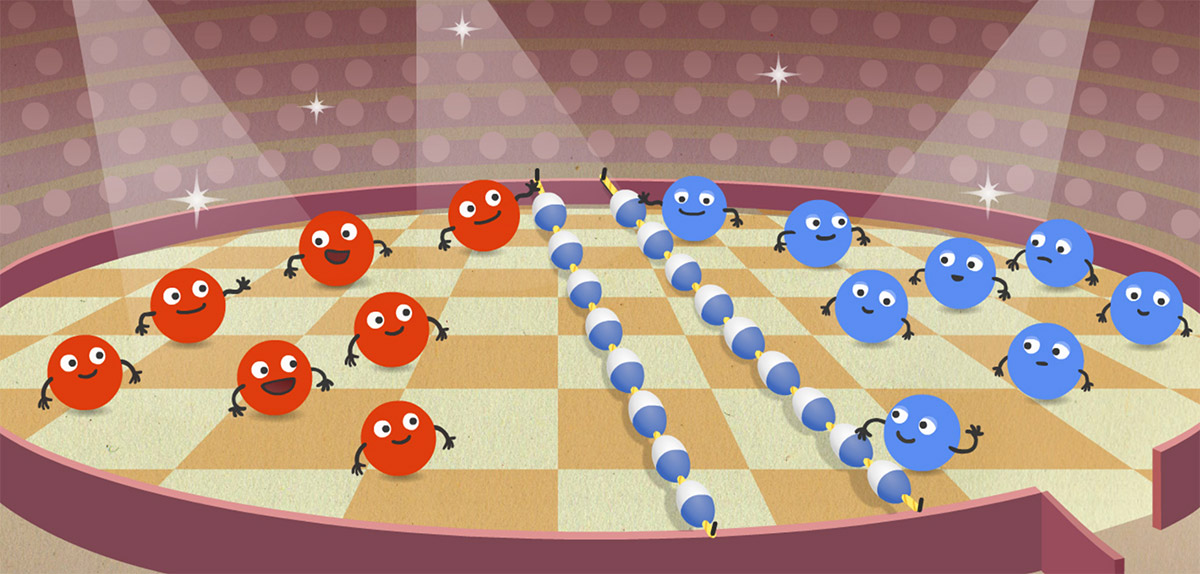
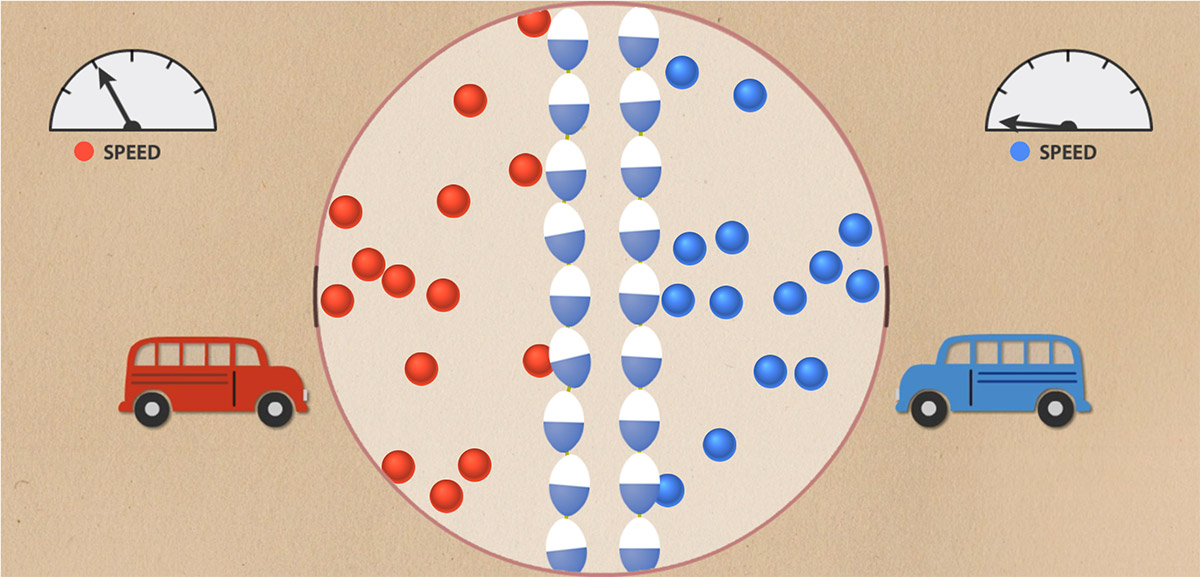
We discovered a range of concepts in the answers students gave to the narrator in the Land of Bump (Table 1). They displayed a great deal of high-level thinking related to particle motion in the imaginary context of Red Hots and Cool Blues, offering explanations for how the barrier between the hot and cold particles prevented a transfer of energy. While not all students could articulate the more complex concepts, we expect that children have the initial tools to begin to explain the causes of heat transfer, conduction, and insulation, the building blocks for later understanding of the kinetic heat model.
Table 1. Student concepts about the Land of Bump. (K indicates kindergarten, G1 first grade, and G2 second grade.)
| Heat & temperature concept | Student responses to the Land of Bump narrator |
|---|---|
|
Some particles move slowly, some move quickly. |
Student 1 (G2): “Um, I noticed that the red, like, they were moving a lot faster ’cause they had a lot more energy than the blue and, like, they, they were like moving faster.” Student 2 (G1): “They are not hardly moving at all. They are going slow.” |
|
Particles sometimes bump into each other. |
Student 3 (K): “Oh, and they’re gonna bump into each other.” |
|
Particles that get bumped can then bump other particles. |
Student 4 (K): “It’s going toward one. It bumped into one. It bumped into another.” |
|
Particles that move quickly can bump into particles that move slowly. |
Student 5 (G2): “They [the Red Hots] have more energy and they’re stronger, they have stronger power, so they kind of, like, just bumped into the blue.” |
|
Fast particles that bump slow particles make the slow particles speed up. |
Student 6 (K): “’Cause the Cool Blues are getting, are getting hit by the Red Hots, so they’re going really fast.” |
|
When a fast particle and slow particle collide they both change speeds. |
Student 7 (G2): “Because they’re touching each other so that makes the Reds slow down and the Blues faster than before.” |
|
A particle that moves when hit may not move far enough to hit another particle. |
Student 8 (G2): “Yeah, ah-hum, they changed. Because they, um, kept bumping into each other and then the Blues bump so slowly that they didn’t bump them very fast so they went only a couple of inches, and they’re, like, going very slow.” Student 9 (K): “Mine, mine is very slow [Cool Blue], and he’s right there, and he’s apart from all of the others.” |
|
If particles cannot reach other particles, there will be no change of speed due to bumping. |
Student 10 (G2): “Because when the Reds bumped into their separator, they had their own separator so they didn’t have to share their separator with the Blues. And the Blues had their own separator so they didn’t have to share with the Reds. … So, like, the Reds bump into their separator, they give speed to it, but the Blues never bump into it, so they don’t speed up.” |
Nathan Kimball (nkimball@concord.org) is a curriculum developer.
Jamie Broadhead (jamie.broadhead@yahoo.com) is Head of Product Development at Videatives, Inc.
This material is based upon work supported by the National Science Foundation under grant DRL-1222892. Any opinions, findings, and conclusions or recommendations expressed in this material are those of the author(s) and do not necessarily reflect the views of the National Science Foundation.
